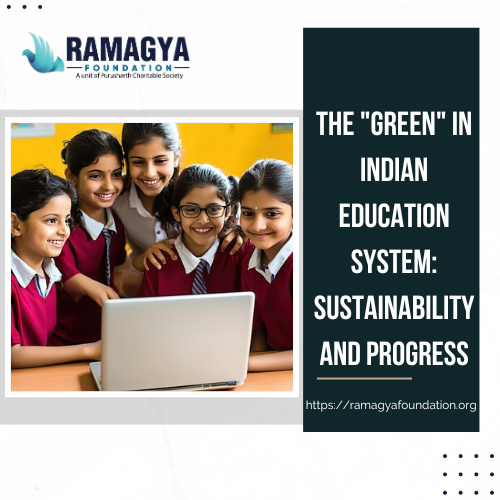The concept of “green” education has received significant attention in India over the past few years. This blog examines the integration and challenges of sustainability principles in the Indian educational system.
Understanding Green Education
Environmental education and sustainable education are other names for green education. The program’s objective is to provide participants the values, information, and abilities they need to support environmental preservation and sustainable development. This strategy is essential in India because of the many environmental problems the country faces, such as pollution and resource depletion.
The Importance of Green Education in India
- Environmental Awareness: Green education helps communities, educators, and students become more conscious of the environment. It encourages a deeper comprehension of the relationships that exist between environmental factors and human action.
- India’s Sustainable Development Initiative: In order to empower the next generation of decision-makers and strike a balance between economic expansion and environmental protection, India is incorporating sustainability ideas into the educational system.
- Global commitments: India is a participant to several international agreements, including the Sustainable Development Goals and the Paris Agreement. These objectives stress how crucial education is to attaining environmental sustainability.
Advantages of the Indian Education System:
There are many advantages of the Indian Education System. Some of them are:
- Holistic Approach: This approach focuses on a well-rounded educational experience that incorporates academics, the arts, sports and moral values. It aims to develop a student’s overall personality.
- Diverse Learning Options: Students can explore their talents and interests in a wide range of fields, including the sciences, humanities and vocational.
- Strong Foundation: This system is designed to build a solid foundation for students in mathematics, science and languages. It prepares them for future education and careers.
- Cultural and Moral Values: Indian Education instills moral values and cultural values. It also teaches students about ethics and respecting traditions. This fosters a sense of self-identity and social responsibility.
- Competitive Exams: Rigorous competition exams such as JEE, NEET and UPSC promote academic excellence, provide opportunities for higher education, and offer prestigious careers.
- Global Recognition: Indian universities, graduates, and jobs are recognized internationally, which opens doors to international collaborations and job opportunities.
Overall, the Indian education system is aimed at creating well-rounded, competitive individuals with the knowledge, skills and values necessary to succeed in today’s world.
Technology’s role in green education
- Interactive Learning: Digital learning tools such as educational apps, platforms online, and simulations engage students in interactive lessons about environmental topics like climate change, renewable energies, and waste.
- Virtual Field Trips: Technology allows students to take virtual field trips around the world, including ecologies, conservation zones, and renewable energy installations. This provides immersive learning experiences for students without having to leave their classroom.
- Data Analysis: Geographic Information Systems (GIS) and data visualization help students analyze environmental information, monitor changes in ecosystems, and understand the environmental impacts.
- Communication and Collaboration: Social media, online forums, video conferences, and other platforms allow students to collaborate on environmental projects. They can also share ideas and promote advocacy.
- Green Technologies: Digital resources such as solar panels, windmills, and water-saving methods are available to help students learn more about green technologies.
Challenges and Solutions:
| Challenges | Solutions |
| Curriculum Integration |
|
| Teacher Training |
|
| Resource Constraints |
|
| Awareness and Mindset |
|
| Policy Support |
|
Ramagya Foundation – Empowering minds with green knowledge
- Ramagya Foundation is a non-profit organization that promotes environmental education by promoting sustainability and awareness through various initiatives.
- Students are taught about waste management, renewable energy and conservation.
- The foundation organizes tree planting drives, recycling campaigns and environmental workshops in order to get students involved with green initiatives.
- Ramagya Foundation, in partnership with local communities, creates hands-on opportunities for environmental stewardship and learning.
- This nurtures a new generation of eco-conscious, environmentally-conscious leaders.
Conclusion
In the Indian educational system, green education is more than a concept. It’s a necessity to achieve sustainable development and environmental resilience. India can create a more sustainable future by empowering its students with sustainability-based knowledge, skills and values.
Stakeholders can ensure green education is an integral part of each learner’s journey through collaborative efforts, innovative methods, and continual learning. This will contribute to a harmonious relationship with people.
